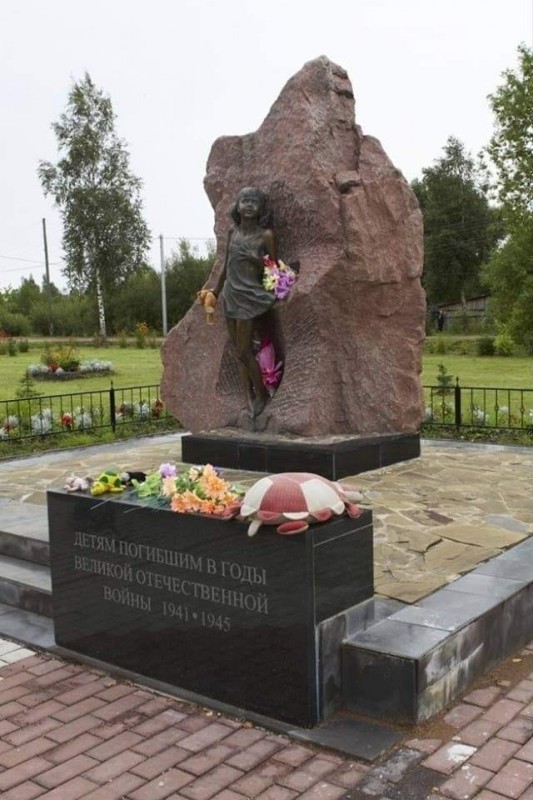17:16 ANYA’S LIFE IN EXCHANGE FOR ANOTHER'S | |
|
Inscription on the front of the monument – To children who died during the Great Patriotic War 1941-1945 On 25th December 1941, in a village east of Kursk city, an 11-year-old girl helped a wounded Soviet officer to escape from a German interrogation. It cost the child her life. Anya Obukhova lived in a village of the Kursk region, an area famous for hosting the largest WW2 tank battle between 10 & 12 July 1943. Anya's father was drafted to the Army after the German invasion of the USSR on 22 June 1941. Before the Nazi occupation of the Kursk region, Anya went often to a small hospital, housed in a former school building, to help doctors and nurses because of a shortage of medical staff. The girl was not afraid of any work, including night shifts. Over the course of her work she had become particularly fond of an officer who reminded her of her father. The officer was well on the road to recovery but he was not able to move without help. One day, quite unexpectedly, German troops broke through the defenses in the Kursk region and occupied the village. The hospital could not evacuate in time as the majority of the POWs were badly wounded. The Nazis planned to interrogate some Russian officers and soldiers and then shoot them, which was common practice during the war. How could Anya save the father figure officer? The plan she came up with was quite unsophisticated. Very early one morning the girl came to the hospital dragging a wooden sledge. The Germans left the hospital unguarded – the wounded POWs were in no shape to escape. Anya helped the commander to leave the building, laid him on the sledge and covered him with hay. There is a Russian saying that courage takes cities, love gives strength and sometimes despair can lead to luck. Anya succeeded in evacuating the officer from the dangerous hospital and provided a shelter for him in the village. She was glad that she had done the great job of saving a human life. Despite her brave actions, she remained just a child, naively hoping that the Nazis would not pay attention to the officer. She was wrong. The Germans noticed that one prisoner was missing but, after checking every house in the village they still found no trace of him. That day, the interrogation and execution of POWs was postponed. Anya was pleased. She had extended the Russian soldiers’ lives, even if only for one day! The invaders guessed that the wounded man could not have disappeared without help. They apprehended an old man, assembled the villagers and shot him in front of their eyes. The Germans then announced that if the missing Russian officer did not appear, the executions would recommence. Anya was in a dilemma. She had saved one life – and now her enemies were threatening to execute others. So the girl confessed to the Germans. The Nazis did not shoot Anya on the spot: they desperately wanted to capture the officer. Instead, they began to torture her. They beat her with sticks, dragged her by the hair, kicked her like a football. The torture lasted a whole day and then, in the evening, the bloodied girl was tied to one of the school desks with guards at the door. The winter of 1941-1942 was particularly harsh. During the night Anya froze to death. The following morning, Russian soldiers arrived to liberate her village, which in the course of the war changed hands a few times. All the wounded soldiers from the hospital were saved, including Anya's officer. He fought through to the end of the war and survived. For years afterwards, the officer and his wife visited the girl’s grave many times to honor Anya’s memory. | |
| Reads: 681 | | |
| All comments: 0 | |
